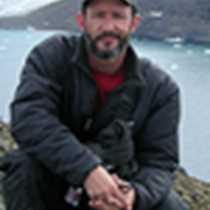The object of the morning was to search for marine mammals. Whale searching as opposed to whale watching was how we would start. Our Expedition Leader gave us an early wake up call for the first of four species we would encounter today. They were finback whales, the second largest animal on earth. They are the fastest of the large whales. They can cover incredible distances rather quickly between breathes. We all tried to learn the distinguishing marks of the finback compared to the other large whale species we saw. The blue whale! The largest animal in the Sea of Cortez, the largest animal in the oceans, the largest animal to have ever lived! One of the differences is that finback whales hardly ever dive with their flukes or tail up, some of the blue whales in the Gulf of California do. We were able to find one of those whales. We enjoyed the often-repeated sight of the huge animal diving down and its fluke slowly slipping into the water like some large battleship sinking out of sight. The whale also did a few side lunges in an attempt to capture food. The whale was very generous with its position compared to the ship so we could see the mottling of the side patterns on this species. The productive waters also gave us some experiences with bottlenose dolphins as well as common dolphins at different times during the morning. The officers took the ship very close to the playful dolphins as they inspected the Sea Bird for a few minutes before moving off in search of food.
The afternoon was spent snorkeling, hiking, or kayaking at the north end of Isla Monserrate. The snorkelers saw some examples of reef fish and invertebrates. The kayakers saw some interesting geology and a few nesting birds on the sea cliffs. The hikers were introduced to some of the Sonoran desert plants and their adaptations to a dry lifestyle. There was even time for sand castles on the beach. A wonderful beginning to our voyage in the Gulf of California.




